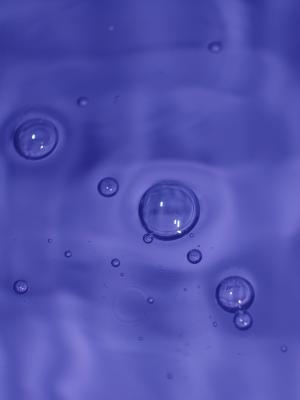
Bubbles in your automotive paint aren't usually caused by air, though they almost always look like air. When applying paint to a vehicle, these bubbles are called "solvent pop." It happens when there is a contaminant under the surface that reacts with the fresh paint chemically, causing gas to become trapped under a film of paint or clear top coat.
One of the biggest reasons for the presence of solvent pop, or bubbles in your paint, is the presence of solvents, in particular wax and grease remover, on the surface that you are painting. Wax and grease remover is an important preparation step on the vehicle prior to painting, but you must always remember to wipe away the wax and grease remover with a clean rag before painting in order to prevent the formation of bubbles.
If you are painting in a professional shop, then dust particles that land on the vehicle could be to blame for bubbles in your paint. In an automotive collision repair facility, body filler dust, wax dust and polishing compound dust all circulate through the air as tiny particles. Without adequate air filtration, these dust particles will settle on a car. When clear top coat comes into contact with wax or polishing compound dust, it can form a small bubble of clear coat that will break and form what is called a "fish eye." To prevent this, always prepare the vehicle in a completely clean environment, such as a paint booth, with the air filter system in place and running correctly.
Attempting to paint over rust that has not been properly treated will cause bubbling in the surface of the paint as time passes, though it will not be immediately apparent unless there is wet solvent trapped in the rust. The chemical reaction of the rust causes the bubbles to form, particularly on factory paint jobs. On repair paint jobs, this shows up as cracking due to the thickness of the paint. Paint that is thick doesn't have the flexibility of thinner paint, contributing to the presence of cracks rather than bubbles.
In automotive paint systems, primers are not single-stage applications. They must be mixed with a catalyst in order to dry correctly. If the catalyst is not mixed in the proper ratio, or if the primer is applied too thickly without sufficient time to dry before applying the top coat, the catalyst for the primer will react with the paint on the vehicle, causing bubbles to form. In order to prevent this, it is important to allow the primer to dry completely according to the manufacturer's instructions before applying the color coat and top coat.